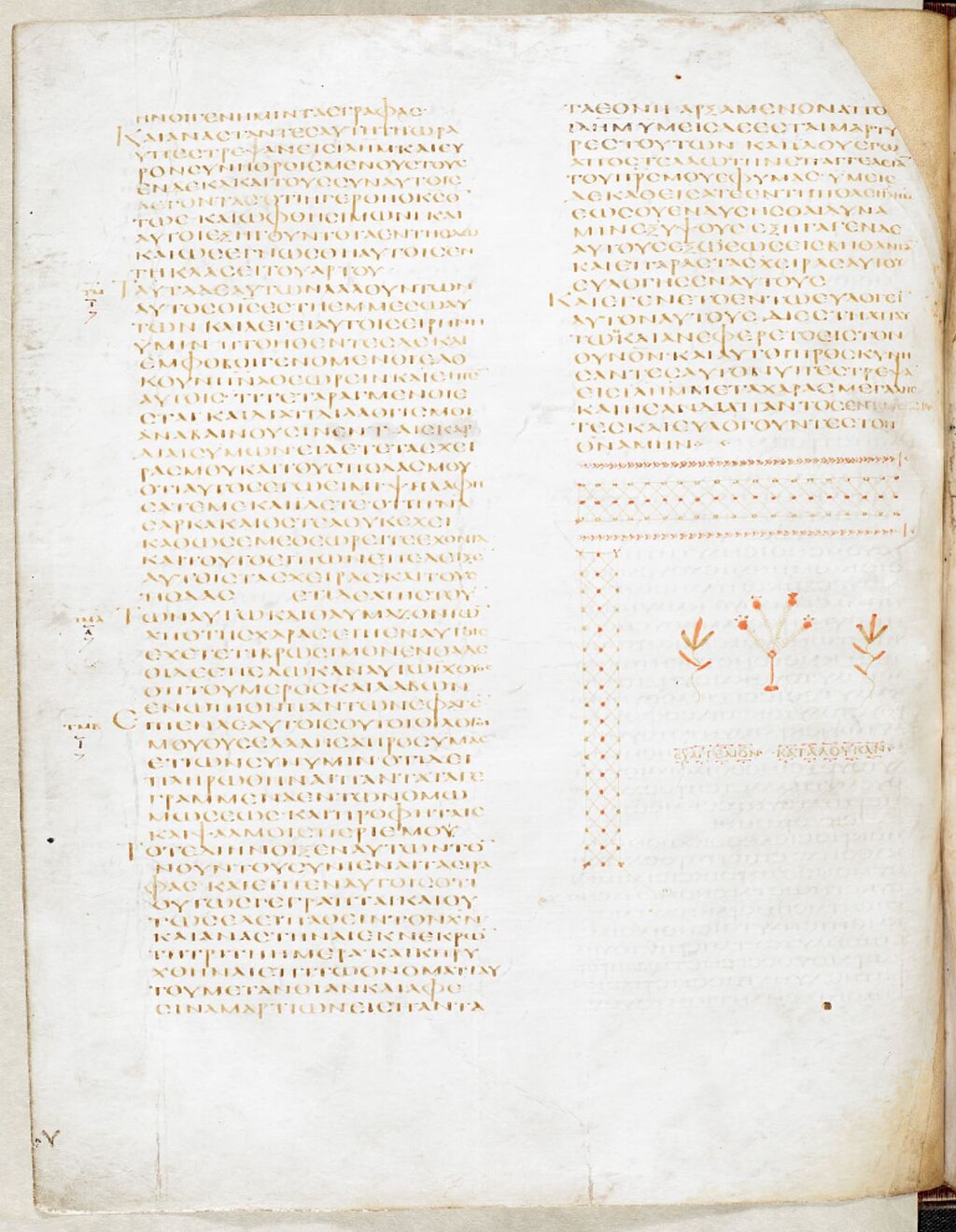Codex Alexandrinus f41v - Luke
- Please note that the old folio number was folio 65; older literature including the catalogue entry reproduced online refer to fol. 41v as "fol. 65v" catalogue entry, which gives "6. (ff. 20r-41v): Superscription (f. 20r): 'Εὐαγγέλιον κατὰ Λουκᾶν'. Colophon (f. 41v): 'Εὐαγγέλιον κατὰ Λουκᾶν'" [Evangelion according to Luke])
From bl.uk British Library Codex Alexandrinus:
Held by British Library
Shelfmark: Royal MS 1 D VIII
Description
Copied in the 5th century, Codex Alexandrinus is one of the three early Greek manuscripts that preserve both the Old and the New Testaments together.
Its name (‘Book from Alexandria’) derives from the city of Alexandria in Egypt, where it was preserved before the Greek Patriarch of Alexandria, Cyril Lucar (d. 1638) brought it to Constantinople in 1621. As Greek Orthodox Patriarch, Lucar had close ties to Britain and the Church of England, which supported him in many of his activities. He presented this manuscript as a gift to the ruling monarch, Charles I (r. 1625–1649) in 1627. Arriving in London through the English Ambassador to Istanbul, Codex Alexandrinus became part of the Royal Library. It survived the devastating fire of 1733, when the librarian Richard Bentley (d. 1742) rescued it himself from the flames. It subsequently entered the British Museum and then the British Library.
Codex Alexandrinus contains the entire Bible in Greek, comprising the ancient Greek translation of the Old Testament (Septuagint), together with the New Testament. Its content is slightly different from a modern printed Bible: it contains several extra books, including Maccabees as part of the Septuagint Old Testament and the First Epistle of St Clement of Rome (d. 99) at the end of the New Testament. It is especially noteworthy for preserving one of the best texts of Deuteronomy and Revelation, and it is the oldest manuscript of the second and third books of Maccabees.
Relevante Bilder
Relevante Artikel
Codex AlexandrinusDer Codex Alexandrinus stammt aus dem 5. Jahrhundert; er enthält das Alte Testament und den größten Teil des Neuen Testaments auf 773 beschriebenen Blättern. Er enthält zudem zwei frühchristliche Schriften, die zur Gruppe der Apostolischen Väter gerechnet werden, nämlich den ersten und zweiten Clemensbrief. .. weiterlesen

